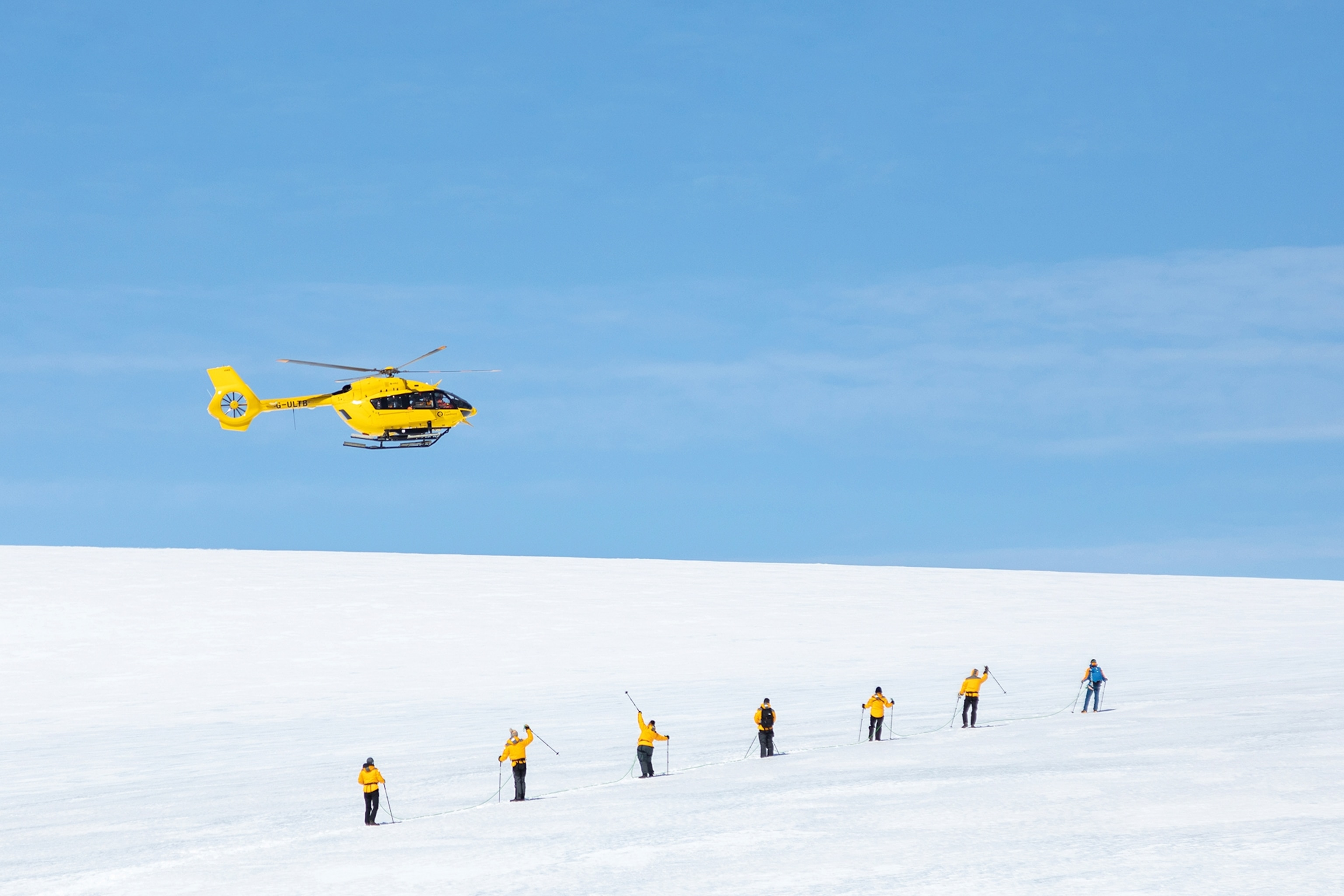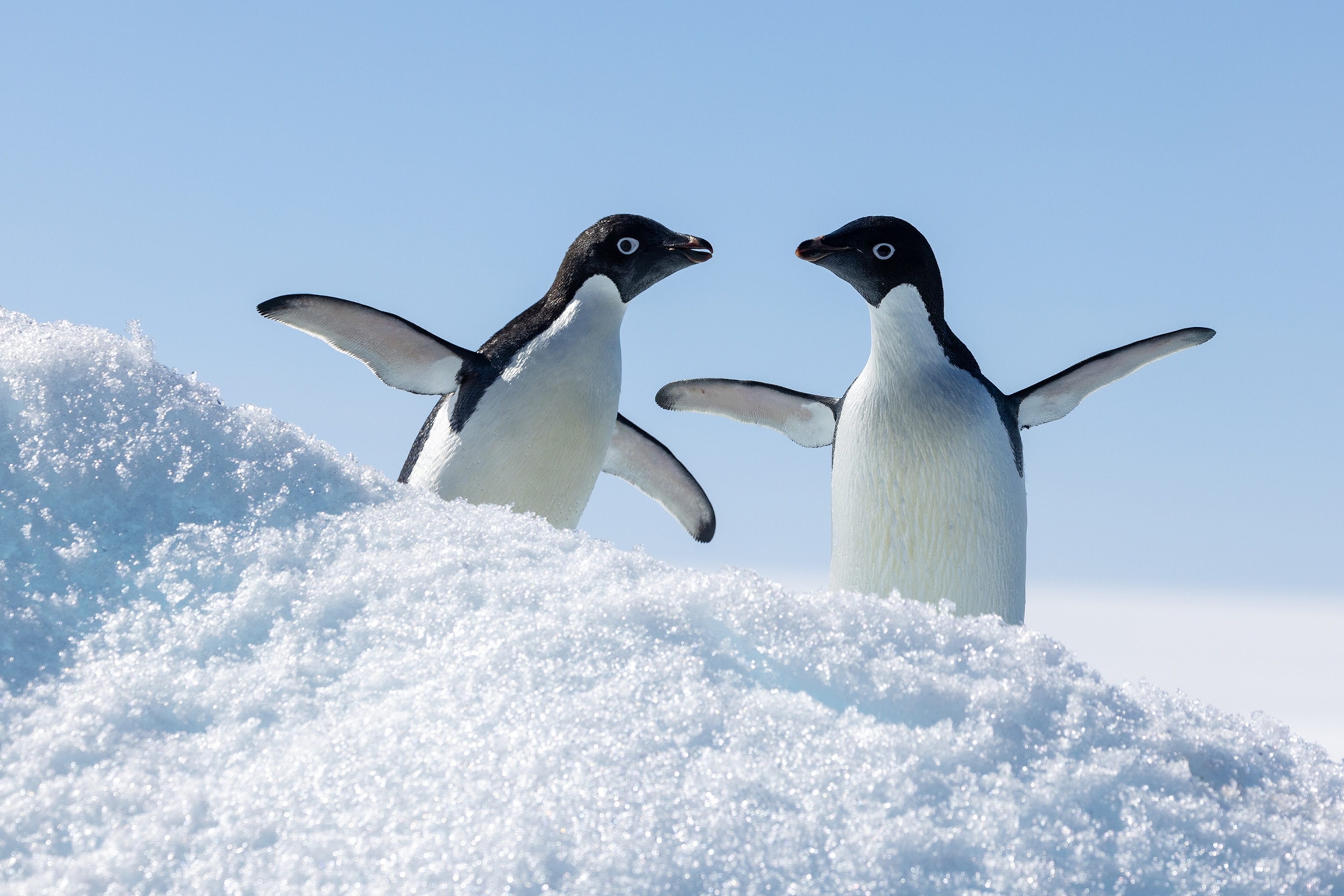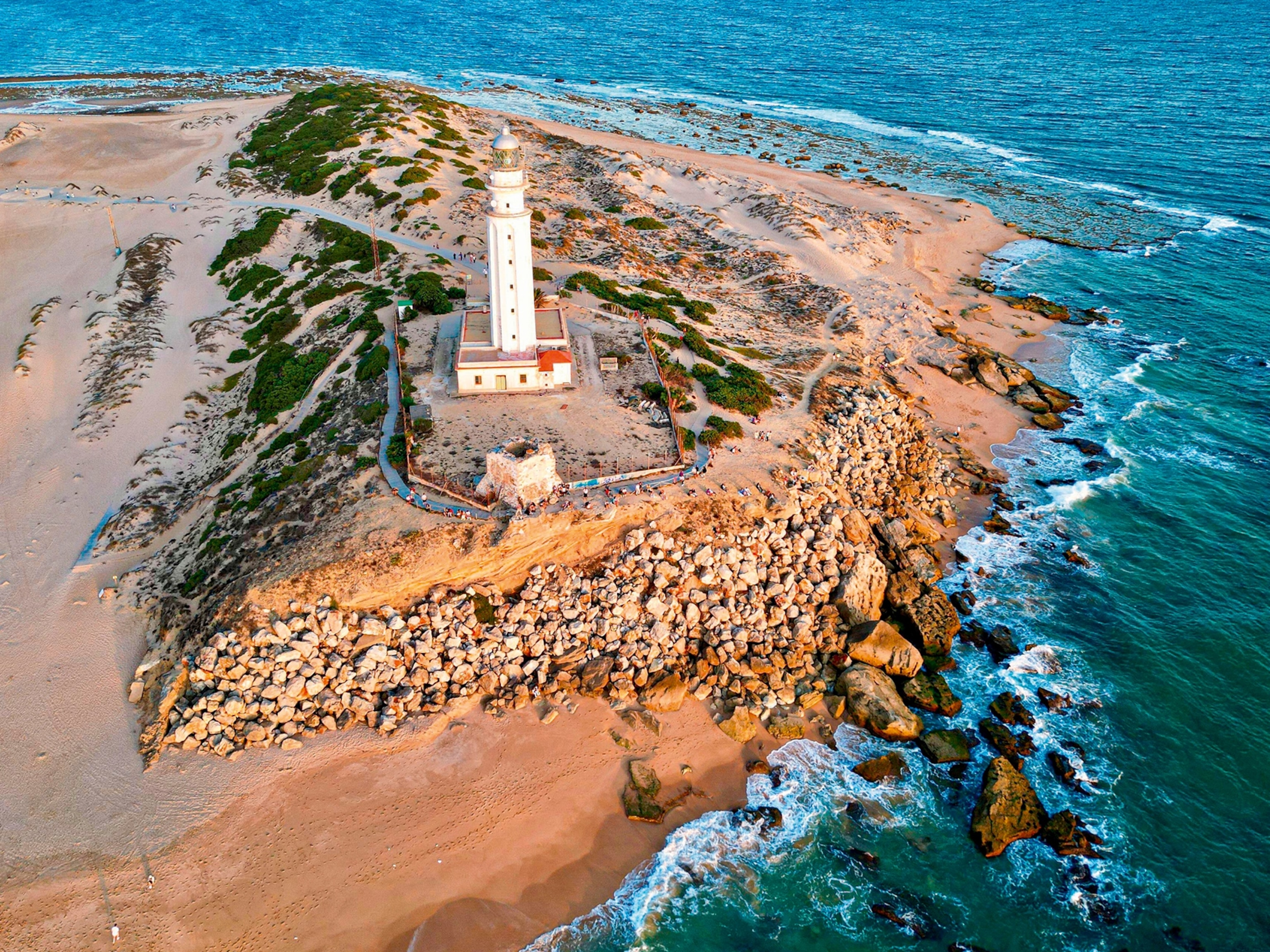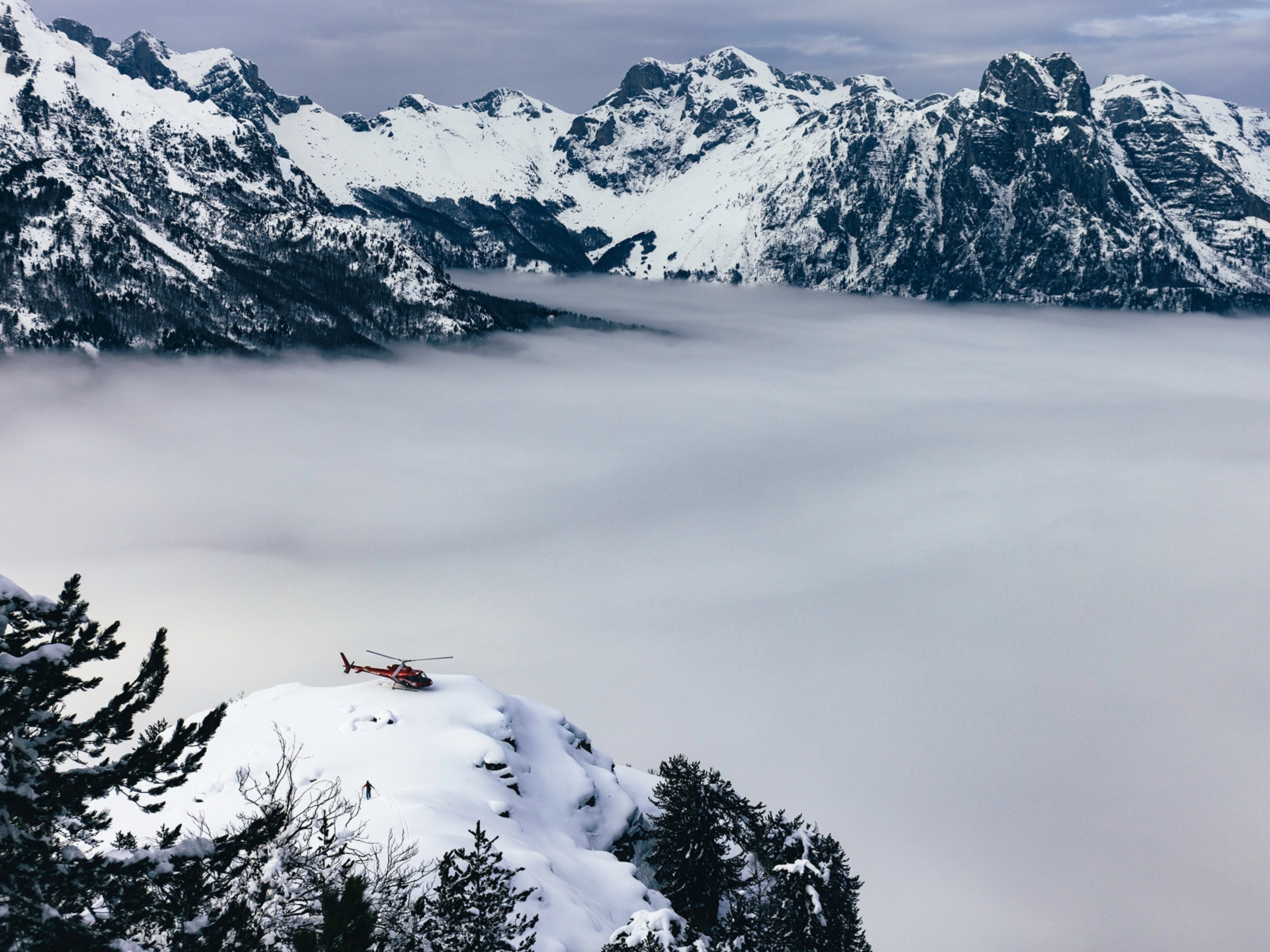Here's how to meet Antarctica's penguins with an ornithologist
Step out of a helicopter onto a never-before-seen island in Antarctica’s distant south during this expert-led tour around endless icebergs, frozen cliffs and mercurial glaciers.

For the explorer Ernest Shackleton, it was the glory of reaching the South Pole that brought him to Antarctica. For polar polymath Fabrice Genevois, it was something far less dangerous: penguins.
And so, 150 miles south of the Antarctic Circle, as we land on the shore of Red Rock Ridge, Fabrice announces it’s time to get obsessed with the flightless birds ourselves. “Keep quiet,” he whispers, offering instructions as we transfer from boat to wintry shore. “Go slow, and don’t be alarmed if they get too close. They’ve never seen people before.”
The temperature has dropped to -10C. Hats are pulled down and collars zipped tight as we clamber over ice slicks, an unlikely welcoming party dressed in bright yellow waterproofs. To one side, the cliffs of the Black Mountains rise stark above a bay dotted with icebergs the size of container ships. To the other, a pure white promontory is besieged by light winds, heavy snow drifts and hundreds of pairs of curious Adélie penguins. “They’re very inquisitive,” Fabrice announces, eyes twinkling. “There’s always something interesting to see.”
The French ornithologist is a casting agent’s idea of an Antarctic guide: wild-eyed, white-haired, wearing rock star sunglasses and a vintage jacket rather than a life vest or hat, despite the plunging cold and perils of driving a rigid inflatable boat in rough waters. Fabrice began his love affair with seabirds as a researcher on the far-flung subantarctic Kerguelen Islands. Since then, he’s published numerous books on seabird biology and ecology and calls this frozen land of fjords and glaciers his second home.
Fabrice’s experiences have led him to work as a lecturer and guide for Quark Expeditions, a polar expedition company that, since 1991, has pioneered Antarctica tourism, including completing the first commercial circumnavigation of the continent. Somewhat inevitably, the Frenchman has become the go-to avian specialist on board. As Fabrice puts it: “A day without a penguin is a bad one. But rest assured, you won’t be disappointed.’”

During the expedition, learnings come thick and fast, both from Fabrice and the army of other experts on board, from glaciologists and geologists to geographers and marine biologists. I’m shocked to discover crabeater seals are misnamed (there are no foolhardy crabs in Antarctica), and that leopard seals can eat up to 15 penguins a day. The Gentoos making up a large portion of these feasts were named by British sailors who thought their white head markings resembled turbans (Europeans often used the word ‘gentoo’ to refer to people on the Indian subcontinent before Hindu became the more common term). Meanwhile, Antarctic shags stick so close to the coastline that it’s said early explorers — including Shackleton and Captain James Cook — used them as living compasses. There’s so much to be curious about, and it’s impossible not to hang on every word uttered by the team.
With the luxury of the light-filled austral summer, we encounter parts of Antarctica few travellers here ever see, dropping anchor at a succession of islands. Happily for Fabrice, there are penguins aplenty, but we also meet elephant seals roaring on beaches, step onto ice floes, watch leopard seals on the hunt and stare mesmerised at a pair of orcas moving beneath our boat like a carousel.
One morning, marine biologist Nick Engelmann and I find ourselves speechless, surrounded by a pod of humpbacks, their barnacle-covered flukes brushing against the side of our rigid inflatable as they swoop beneath us. “The unpredictability keeps bringing me back,” he says later, a brilliant sun shining overhead. “You just never know what you’re going to see and there’s always more to learn.”
Out on the top deck of our expedition ship on our final night, as it charts a silent course back to civilisation, guests gather alongside the expedition team, including Fabrice. This evening, he’s traded his down jacket for a penguin suit of another kind: a sharp blazer and tie. He looks dapper, but there’s a flicker of melancholy in his eyes as he gazes out at the infinite white, now trailing behind us. “I long for this place when I’m not here,” he says softly, “because, as you now know, a day without a penguin is a bad day.”
For so long, the word often paired with Antarctica has been ‘struggle’. But for those of us standing here, hushed beneath a bruised polar sky, the seventh continent feels more like a place of awakening; a place of high adventure, untamed beauty and mystery. We’ve learned about this hidden world, felt its vastness, heard it crack and breathe and now we wonder: how does one go back to their ordinary life once you’ve locked eyes with a leopard seal? Walked where icebergs are born? Or stood, grinning, in the company of a thousand tuxedoed birds? mm
How to do it
To subscribe to National Geographic Traveller (UK) magazine click here. (Available in select countries only).





